This
post was originally published on
this siteOriginally posted at: http://www.nerdfitness.com/
So you want to get bigger and stronger, like this guy.
Leopard print leotard optional.
Maybe you’ve always been the skinny guy and can’t gain weight to save your life (trust me, I’ve been there).
Maybe you’re a bigger guy and you’d rather have broad shoulders than a broad waistline.
Maybe you’re a female, and you’ve realized that lifting weights with the right diet will give you that “toned” look that everybody is after.
Maybe you just want to be stronger and faster.
No matter who you are or what your starting point is, I want to help get you where you want to go.
Building muscle is something I’ve been obsessed with since high school (okay, not obsessed, but it’s where the majority of my fitness research and experience has taken me). After struggling with building muscle for close to a decade, I’ve made significant progress in the past few years, packing on 20+ pounds of muscle, learning handstands, and adding 200+ pounds to my deadlift.
If you’re looking to start building muscle, getting bigger, and becoming stronger, these are the things you need to do:
- Lift heavy things
- Eat a diet based on your goals
- Rest
I realize doing those three things is much easier said than done – I struggled with progress for a decade and know exactly what you’re going through.
After all, there’s nothing more frustrating than putting in effort for months (or years) and not seeing results. And unfortunately, this is what I see from most people: Lots of well-intentioned but misguided effort in the gym and no changes.
You probably don’t have years to make the mistakes that I did, and you just want to start getting results today. In addition to the free resources below, we also offer 1-on-1 Online Coaching, where you’ll get personalized instruction for your body type and goals, and professional accountability from a Coach on Team Nerd Fitness!
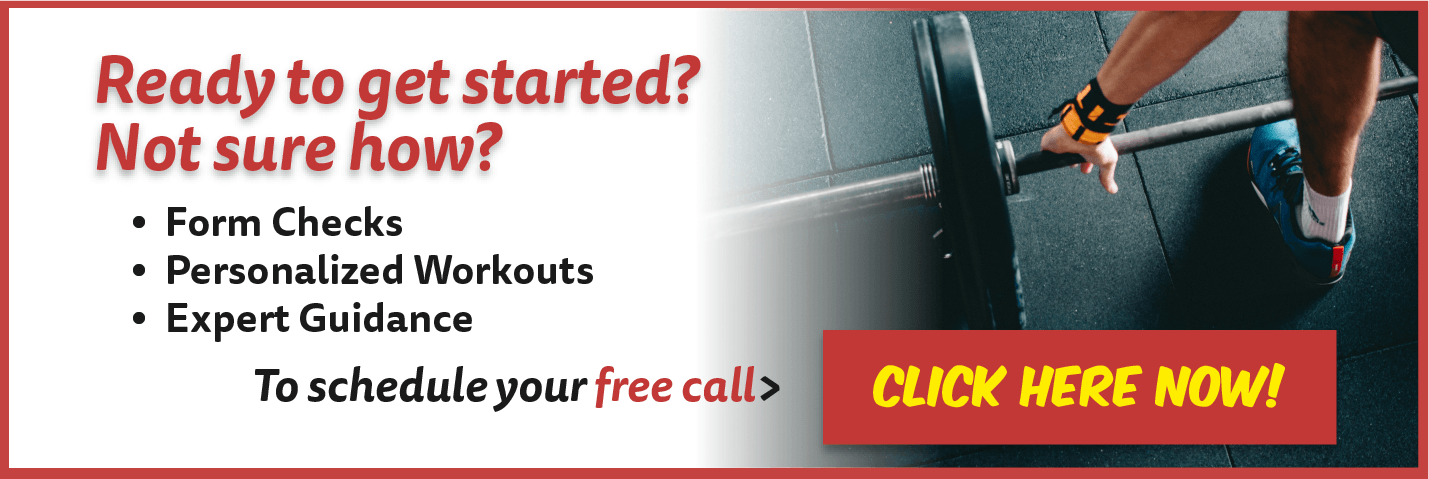
But enough of that, let’s get into the nitty-gritty of how to get started with Strength Training!
How do you build muscle? Lift Heavy Things
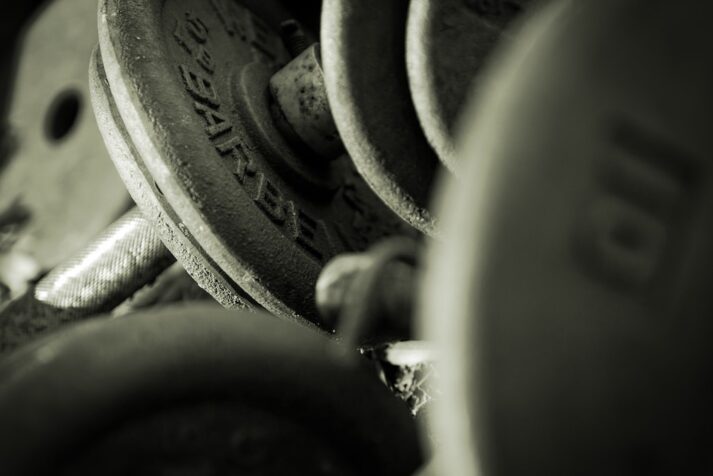
If you are going to build muscle, you’re going to need to lift heavy things. This means you’ll most likely need access to a gym with a great free-weight section. Body weight exercises can be fantastic for weight loss and keeping the muscle you already have, but if you’re serious about weight training you’ll need a gym with a squat rack, bench, barbells, and a spot to do pull ups, chin ups, and dips to be most efficient.
Got access to a decent gym? Good, now we can started.
Because we’re looking to create functional strength and size, we’ll be doing lots of full-body routines with compound exercises that work multiple muscle groups at once.
They’re more efficient, they create solid growth and stimulation, and they will keep you safe. Why is that?
Well, when you spend all of your time doing stupid isolation exercises on weight machines (ugh), you’re only working those specific muscles and not working any of your stabilizer muscles (because the machine is doing all of the stabilization work). On the other hand, when you do compound exercises like barbell squats, you work pretty much EVERY muscle in your body, setting yourself up to be strong and injury free.
Stay away from machines, focus on dumbbells and barbell exercises.
Each of your routines should have one leg exercise, push exercise, pull exercise, and a core exercise:
That’s IT. Don’t worry about adding in any ridiculous machine shoulder shrugs, iso-chest flys, preacher bicep curls, calf-raises, whatever. Learn these few exercises, get really good at them, and your entire body will get stronger and bigger. Focus each week on adding more weight to each exercise. For example, if you did 3 sets of 5 squats of 150 pounds this week, try for 3 sets of 5 squats of 155 pounds next week.
If you do that, you’ve gotten stronger. Eat right, and you’ll get bigger too.
what’s a sample routine for building muscle?

Using the principles I’ve laid out in my “how to build a workout routine” article, here’s a routine I’ve created for myself recently:
- Monday – Squats, Benchpress, Wide Grip Pull Ups, Planks
- Wednesday – Deadlift, Overhead Press, Inverted Rows, Hanging Knee Raises
- Friday – Weighted Lunges, Weighted Dips, Weighted Chin Ups, Reverse Crunches.
Each day has a leg exercise, push exercise, pull exercise, and some core work.
While it’s possible to build out the perfect routine on your own, many of our Rebels end up spending hours and hours building something custom – only to realize it isn’t what they need (or isn’t effective) weeks and months later for their goals.
For people who want to avoid that altogether, we built the solution – our uber-popular 1-on-1 Nerd Fitness coaching program pairs you with your own Nerd Fitness Coach who will get to know you, your goals, and your lifestyle, and handcraft a workout plan that’s specific to not only your body, but also to your schedule and life. Click on the image below to schedule a call with our team to see if we’re a good fit for each other!

How many sets and reps should I do?
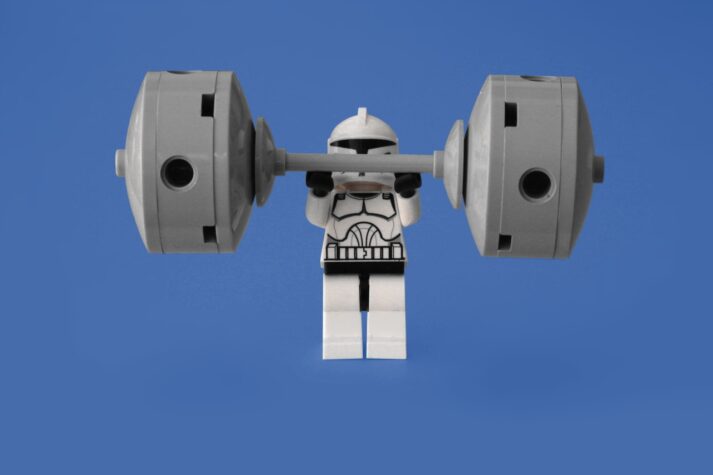
That depends on your goals. If you’re just interested in getting stronger, you can do 3-5 sets of 5 reps, with a focus on lifting heavier and heavier each week. If you’re looking to add more size along with strength, mix up your rep ranges. Sets of 5 reps will build compact explosive strength, while sets of 6-12 reps will build more size but less concentrated strength.
I try to mix it up. This week, I might do 3 sets of 5 reps for each exercise (other than the core exercises), adding enough weight to each exercise so that it’s incredibly taxing. Next week, I’ll do four sets for each exercise, adding weight each time and doing less reps. For example, I’d do 12 reps of an overhead press at 100 pounds, then 10 reps at 105 pounds, then 8 reps at 110 pounds, and finally 6 reps at 115 pounds.
The good news is that no matter which path you take (pure strength, size, or a mix of both), as long as you are adding weight each week you WILL be getting stronger.
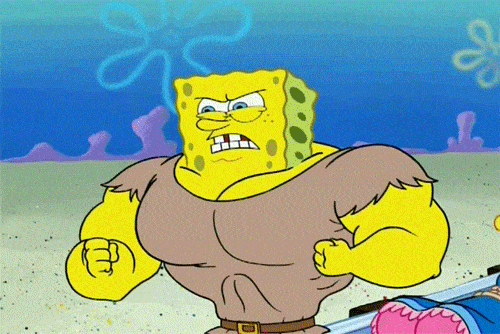
ANY path will work, provided you are getting progressively stronger with it! So if you do 5 sets of 5 squats at 140 pounds this week, aim for 5 sets of 5 of 145 pounds next week. Or 3 sets of 10 at 100 pounds, then next week try for 3 sets of 10 at 105 pounds.
Get stronger, which is 20% of the puzzle. The other 80% is nutrition (which I cover later)!
If you want even more info, you can head to our article “Determining the Correct Number of Reps and Sets” for a deep dive into the subject.
Any other weight-lifting tips?
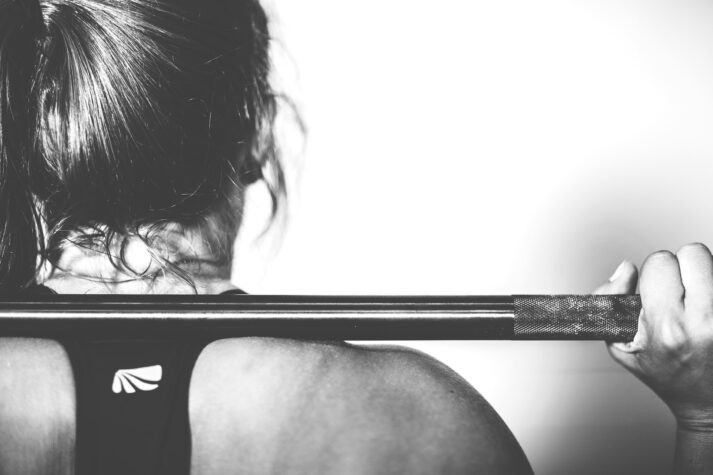
Warm-up before exercising – don’t walk into a gym, slap 45-pound plates on the bar, and then start your routine. Get your heart rate up and muscles warm first by doing a dynamic warm-up of jumping jacks, lunges, bodyweight squats, hip raises, push-ups, leg swings, jumps, etc. After that, always start with doing a set or two of lifting JUST THE BAR. Only then should you start adding weight for some warm-up sets before moving into your real sets.
Have focused form – if you’re doing a bodyweight squat incorrectly, you might develop bad habits. However, if you do a squat incorrectly with 405 pounds on your shoulders, you could do some serious damage. If you’re just starting out, check your ego at the door: start with a VERY light weight and make sure you are doing the exercise properly. There is NO SHAME in starting with just the bar. You can always add more weight next week if this week is too easy.
Stimulate, don’t annihilate – I try to always have one more rep left when I finish a set. Some trainers will preach working your muscles to annihilation, but I think that’s just asking for an injury, poor form, and beyond-sore muscles. Your muscles get built while resting, not in the gym, so don’t worry about destroying them completely each day you step in the gym – it’s not worth it.

Change up the time between sets – if you’re doing 3 sets of 5 reps of a really heavy weight, it’s okay to wait 3-5 minutes between sets – you’re focusing on pure strength here. If you’re doing sets up in the 8-12 range, try to keep the time between sets around a minute or so. This will affect your muscles in different ways. Just be consistent between sets and when doing the same workout between weeks to track your progress.
Don’t overdo it – More does not mean better in weightlifting. You don’t need to spend two hours in the gym, you don’t need to do 15 different kinds of chest exercises. My routines last no longer than 45 minutes, I only do three or four sets (after warm up sets) for each exercise, and it’s enough to stimulate muscle growth. Three routines a week is plenty too – you shouldn’t lift every day, as you need to give your muscles time to regrow bigger. Less is more – just make your routines really intense and exhausting.
Write down everything – Keep a training journal, and write down exactly how many sets and reps you did for every exercise. That way, you can compare how you did this time with how you did last time. You’ll know how much more you need to lift this week to make sure you’re stronger than last week.
Follow a routine, have a plan. The best thing you can do is have a plan to follow and stick with it! We provide a free bodyweight routine, and a comprehensive gym training routine to get you started with strength training in our free guide, Strength Training 101: Everything You Need to Know. Grab your guide when you sign up in the box below:
Download our comprehensive guide
- Everything you need to know about getting strong.
- Workout routines for bodyweight AND weight training.
- How to find the right gym and train properly in one.
Okay, what about diet?

If you’re skinny and trying to bulk up, this will be 90% of the battle.
If you’ve been lifting weights for a while “but can’t seem to gain weight,” then you are not eating enough – it’s that simple.
I thought I was one of those people who just could never gain weight…and then I learned it was all diet, started eating 4,000 calories a day, and I put on 18 pounds in 30 days. Yeah, I wanted to throw up from always eating along with three Muscle Milk shakes a day, but it worked. Looking back I would have done things differently (so many calories and so much sugar/carbs), but after 6 years of exercising without putting on any weight, it was great to see so much progress in such a short period of time.
4,000 calories sounds freaking insane right? I know. It makes eating a full-time job, as you’re always either cooking, eating, or cleaning up after yourself. But if you really want to get bigger and you’re struggling to do so, then all of your effort is going to have to go into eating more, eating healthier, and eating ALL THE TIME.
Here are a few different techniques for weight gain:
Eat a lot of whatever – this was my first plan years ago: it’s cheapest, the fastest, but probably the least healthy. Just make sure you get 200+ grams of protein a day and 3,500+ calories in any way that you can: pasta, rice, pizza, milk, hamburgers, chicken, protein shakes, muscle milk shakes, whatever. This is how I went from 162-180 pounds in 30 days. I’m not proud of how I ate, but it produced results and I remained healthy and strong.
Eat a lot of “healthy” stuff – I did this once and put on about 10 pounds in 30 days. Lots of oatmeal, brown rice, chicken, my home-made big-ass shake, almond butter sandwiches on whole-grain wheat bread, beef, eggs, fruits, veggies, and some milk. Still not optimal, but it works and is better for your insides than the previous method. Still relatively cheap, as tubs of oats, brown rice, and bread are inexpensive and can add on a lot of calories quickly.
Eat Paleo – I’ve tried this strategy too, and despite my best efforts to GAIN weight I managed to lose five pounds (all of which was fat). It’s certainly possible to gain weight on the paleo diet (try adding in three big-ass Primal Shakes per day), but it is tricky and very expensive to get 4,000 calories of paleo-approved food daily. LOTS of nuts, eggs, sweet potatoes, shots of olive oil, and yams along with tons of chicken, grass-fed beef, fruit, and veggies.
GOMAD (Gallon of Milk a Day) – Obviously this method will only work if you’re not lactose intolerant. Oh, and it has to be whole milk. You’ll definitely put on some fat, but you’ll build muscle and get really strong quickly – and then you’ll adjust the diet to thin out. I’ve attempted this diet occasionally, as whole milk is certainly a fast path to tons of carbs, fat, protein and calories. Be prepared for your stomach and body to constantly feel bloated. Note: you can adjust the amount of milk you consume daily based on how your body responds.
How many calories should I eat to build muscle?
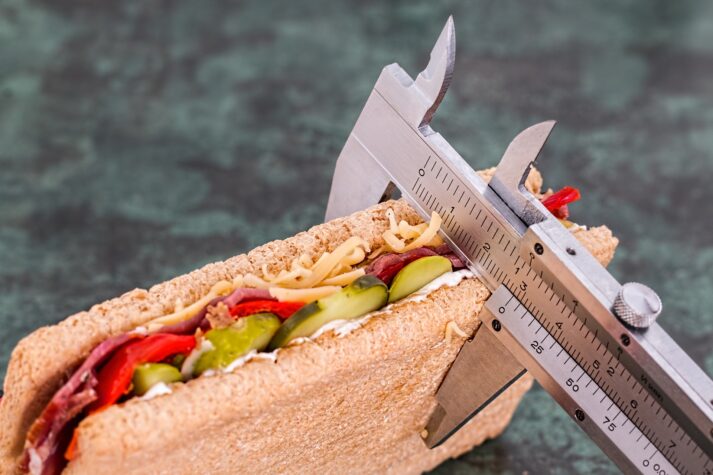
That’s going to depend on your situation – your age, how much you weigh now, how much you want to weigh, and how fast your metabolism is. For some, just 2,500 calories and strength training will be enough to build muscle. For others, you might need to eat 4,000+ calories in order to put on weight. The only way to find out is to track your normal calorie intake for a few days, and then start adding on 500 extra calories per day for a week or two and see if you notice any changes.
Want a rough idea of how many calories you should be eating? Head right here for our calorie requirement calculator.
Bottom line: If you don’t see any change, then you need to eat more. Yes, it will feel excessive. Yes, you will feel full all the time. Yes, it’s a pain in the ass and expensive. But if you really want to be bigger, then you are going to need to really dedicate yourself in the kitchen. Unless you’re a genetic mutant, it’s incredibly tough to build muscle and strength without overloading your system with calories and nutrients.
Just keep eating.
Won’t all of this eating make me fat? I don’t want to get bulky.

I get this question all the time in emails, usually from guys who are 6 feet tall and 130 pounds.
Don’t worry, if you can’t gain weight now, putting on this extra weight is going to be great for you.
Yes, you will put on SOME fat along with the muscle you’re building if you’re running a calorie surplus. This is why picking the right amount of calories per day is important.
If you can build muscle at 3,000 calories, but you’re eating 4,000 calories, you’ll put on a pound or two of fat per week along with your muscle. However, if you need to eat 4,000 calories to build muscle and you’re only eating 3,000, you won’t see any changes. Everybody is different, so you need to experiment and find out what works best for you.
Once you get to your desired weight (actually, aim for about 10-15 pounds heavier than your goal weight), you can scale back the calories, add in some extra sprints to the end of your workout, and keep lifting heavy – the muscle will remain, the fat will disappear, and you’ll be left with the body you want.
I’m not skinny, I need to LOSE weight – what’s different for me?

You can actually build muscle and lose body fat at the same time.
You just have to be careful about how you do it.
We cover the subject in depth in the post, “Can You Lose Weight and Gain Muscle at the Same Time?”
This gist goes like this:
If you are eating enough protein, and have decent fat stores to pull from for energy needs, you can build muscle even while in a caloric deficit.
As long as you are resting (next section) and strength training (previous section), you can shed bodyfat while still putting on muscle.
Now, this only works if you have plenty of fat stores to pull form. Once you start to lean out a little, you’ll likely have to increase your calories to start putting on more muscle.
Just remember, you can build muscle while losing weight, as long as you:
- Sustain a caloric deficit
- Lift heavy
- Prioritize protein
- Rest
Let’s talk about that last one for a bit.
What about rest?

If you’re skinny and trying to bulk up, avoid cardio like the plague. Why? Take a look at the best marathon runners in the world – they look like a stiff breeze would knock them over. Now take a look at Usain Bolt, the best sprinter in the world – tons of muscle, power, and a body to envy. I have nothing against people who run all the time and love to run marathons/half-marathons – as long as you’re active I’m all for it. I’m just telling you that if you want to build muscle as quickly and efficiently as possible, cardio is the enemy.
I will admit that I’m biased against chronic cardio, but mostly because it bores me! You can be far more effective when you focused on getting stronger and only do ‘cardio’ on things you enjoy – after all, your success will largely depend on your nutrition, NOT your cardio!
I spend three days a week in the gym, with each workout clocking in at 45 minutes. I go for long walks on my off days along with a day of sprints to stay active, but I know that my muscles get built while I’m resting, not when I’m working out. I really focus in on my workouts to make them as exhausting as possible, and then I give my body ample time to recover (while eating enough calories to produce a surplus).
If you’re lifting heavy, and eating enough, make sure you’re also getting enough sleep! 5-6 hours a night isn’t going to cut it – you need to get at least 8-9 hours of sleep per night for optimal muscle-building. Take naps too if you have the opportunity. Sleep needs to become a priority.
If you’re a big guy/girl trying to slim down, a little extra cardio might speed up your fat loss, but a lot of it might cause you to lose the muscle you already have. Don’t worry about going for 10 mile runs on your off days – do 20-30 minutes of intervals or go run hill sprints in your park. The weight will come off more slowly, but you’ll only be losing fat, not fat AND muscle.
Once you hit your goal weight and the target amount of muscle mass, I’d recommend adding back in some cardio for your overall conditioning, but keep it varied (sprints and intervals). The focus is to keep building explosive muscle and not long, slow, boring muscle.
If you love going for long runs and aren’t going to give that up, I’m not gonna stop you. Just know that the long hours of cardio will severely inhibit your progress on building strength and size.
What Say You?

This is a basic overview to get ya started. It really boils down to a few major things: lift heavy, eat lots of good food, and rest. Simple to understand, tough to implement. Trust me, I know – I’ve been battling this for the past decade.
If you made it this far, and you want more specific instruction, or have more questions about strength training and bulking up, sign up for our email list in the box below.
I’ll send you two free resources that will help you reach your goals: our massive Strength Training 101 guide and a Skinny Guy Bulk Up Cheat Sheet and Shopping List.
Download our comprehensive guide
- Everything you need to know about getting strong.
- Workout routines for bodyweight AND weight training.
- How to find the right gym and train properly in one.
So did I miss anything?
Do we have any strength building success stories? People who are skinny struggling to bulk up? Big guys who lost weight and got stronger while lifting weights? Post your questions in the comments and I’ll go ahead and answer them.
Let’s hear your strength and muscle stories!
-Steve
PS – If you made it this far, and you are tired of not getting results, check out our 1-on-1 Online Coaching Program. No more guesswork, no wondering if you’re doing exercises correctly – you’ll get expert guidance and accountability from a professional on Team Nerd Fitness who gets to know you better than you know yourself!
Sound good? Head over to our Coaching page and schedule a free call with our team to see if it’s right for you!
PPS: 40,000+ rebels have joined us in the Nerd Fitness Academy! If you’re interested in strength training and want more specific workouts to follow, nutritional advice and meal plans to pick from, a boss battle system, character leveling system, and a supportive community, check it out. We’d love to help you level up with us. See you inside!
###
All Photo Sources are found right here.[1]
Footnotes ( returns to text)
- strongman photo, ericmcgregor: getting-huge, W_Minshull Hardcore Stormies Hit The Gym, Day 286, CrossFit, Stormtrooper, Diet Calorie, It Ain’t Over, LYT, Going to Bed, Achieve.

 Chayote squash is having its day in the sun as of late, but it’s been used for centuries in Latin American cooking and baking. The chayote squash (also known as mirliton squash) is a mild-tasting, relatively low carb, and versatile fruit with a good dose of vitamin C. Because of its hardness, you’ll definitely want to eat it cooked, but the end result will be worth it: a tender but slightly crisp fruit that bears a resemblance to pear or jicama and that takes on the particular flavors of any recipe—sweet or savory.
Chayote squash is having its day in the sun as of late, but it’s been used for centuries in Latin American cooking and baking. The chayote squash (also known as mirliton squash) is a mild-tasting, relatively low carb, and versatile fruit with a good dose of vitamin C. Because of its hardness, you’ll definitely want to eat it cooked, but the end result will be worth it: a tender but slightly crisp fruit that bears a resemblance to pear or jicama and that takes on the particular flavors of any recipe—sweet or savory.























 Don’t Miss the Deadline! Today (3/8/19) is the last day to enter the success story giveaway! Three prizes in all for three randomly chosen (complete = write-up and photos) submissions: a $200 Primal Kitchen gift certificate for one person and a 5-book Primal library for two additional people. Everyone submitting (at any time) will receive a 20% off voucher for an order of their choosing on PrimalKitchen.com or PrimalBlueprint.com.
Don’t Miss the Deadline! Today (3/8/19) is the last day to enter the success story giveaway! Three prizes in all for three randomly chosen (complete = write-up and photos) submissions: a $200 Primal Kitchen gift certificate for one person and a 5-book Primal library for two additional people. Everyone submitting (at any time) will receive a 20% off voucher for an order of their choosing on PrimalKitchen.com or PrimalBlueprint.com. 





 For now classes are 6pm and 640pm at 2840 Wildwood st in the Boise Cloggers studio.
Book your class NOW!
click this ==>
For now classes are 6pm and 640pm at 2840 Wildwood st in the Boise Cloggers studio.
Book your class NOW!
click this ==>








